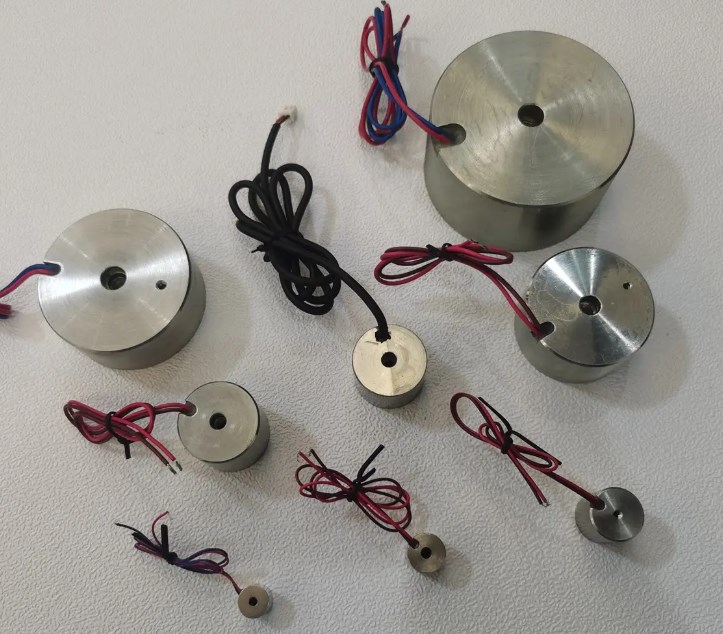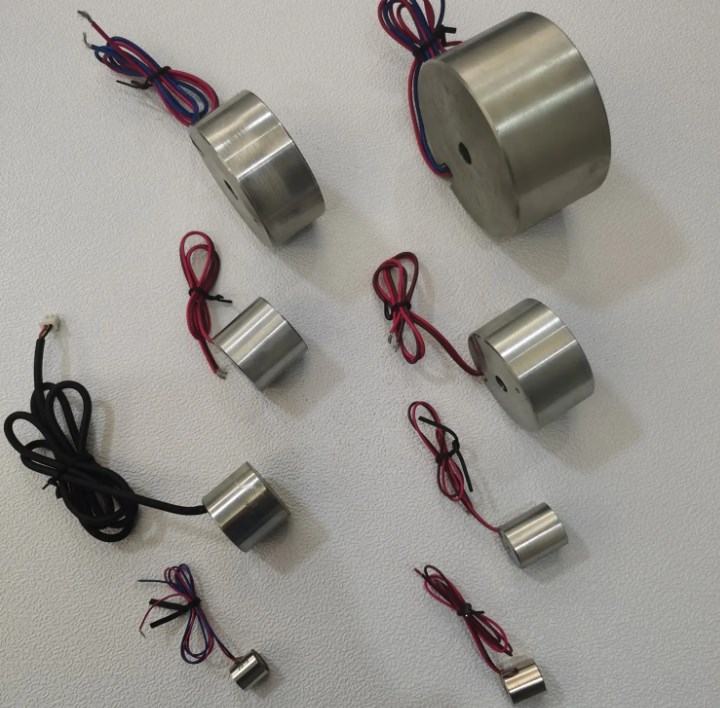The Role of Electromagnets in Advanced Robotics and Automation
Last updated on {{lastDate}}
In the rapidly evolving world of robotics and automation,
electromagnets have emerged as a cornerstone technology, enabling significant advancements and innovations. These devices, which can be switched on and off to control magnetic force, play a critical role in various aspects of robotic systems, from actuation and manipulation to sensing and safety. This article explores the multifaceted applications of electromagnets in advanced robotics and automation, shedding light on how they enhance the capabilities and efficiency of robotic systems.

Electromagnets consist of a coil of wire wound around a core material that becomes magnetized when an electric current passes through the coil. The ability to control this magnetism with precision makes electromagnets invaluable in robotics. They can generate forces that are easily modulated and reversed, offering a level of control that is difficult to achieve with permanent magnets or mechanical systems alone.
Electromagnets in Microrobotics: Pioneering Precision and Control
Microrobotics is a field that stands at the confluence of advanced robotics, microengineering, and nanotechnology, pushing the boundaries of what's possible in miniature scale operations. In this intricate domain, electromagnets emerge as a powerful tool, offering precision, control, and versatility that are unmatched by other actuation methods.
The Essentials of Electromagnetism in Microrobotics
Electromagnets in microrobotics exploit the principles of electromagnetism to manipulate microscale robots or components with high precision. By adjusting the electric current flowing through coils, microrobots can be controlled with a level of accuracy that is simply unattainable with mechanical systems at such scales. This control is crucial in environments where even the slightest deviation can lead to significant consequences, such as in cellular manipulation or the assembly of microelectronic devices.
Actuation and Control at the Microscale
The primary advantage of using electromagnets in microrobotics lies in their ability to exert forces remotely, without physical connections or the need for onboard power sources. This capability is particularly important in constrained environments, like the human body or tightly packed electronic assemblies, where traditional actuation methods are impractical.
Electromagnetic fields can penetrate biological tissues or other materials, enabling the remote control of microrobots for targeted drug delivery, minimally invasive surgery, or diagnostics. Similarly, in the manufacturing of microelectronics, electromagnets allow for the precise placement and manipulation of components, reducing the risk of damage and improving assembly efficiency.

Electromagnets in Medical Robotics: Revolutionizing Patient Care
The integration of electromagnets into medical robotics marks a significant leap forward in patient care, offering innovative solutions for diagnosis, treatment, and surgery. This technological synergy combines the precision and versatility of electromagnets with the advanced capabilities of robotic systems, leading to less invasive procedures, improved outcomes, and faster recovery times. This article explores the transformative role of electromagnets in medical robotics, highlighting key applications and the potential for future advancements.
Electromagnetic Actuation for Precise Control
One of the fundamental applications of electromagnets in medical robotics is in the actuation of robotic arms and tools. Electromagnetic actuators provide precise control over movement, enabling surgeons to perform complex procedures with enhanced accuracy and minimal incisions. This precision is particularly beneficial in surgeries where the margin for error is extremely small, such as in neurosurgery or ophthalmic surgery. The ability to remotely control robotic instruments with electromagnets also reduces the physical strain on surgeons, potentially lowering the risk of fatigue-related errors.
Electromagnetically controlled microrobots present a groundbreaking approach to targeted drug delivery. By manipulating these tiny robots with external electromagnetic fields, medical professionals can direct therapeutic agents directly to specific tissues or tumors, minimizing exposure to healthy parts of the body. This targeted approach can significantly enhance the efficacy of treatments, such as chemotherapy, while reducing side effects, heralding a new era of personalized medicine.
Magnetic Resonance Imaging (MRI)-Compatible Robotics
The non-ferrous nature of certain electromagnets makes them compatible with
Magnetic Resonance Imaging (MRI) environments, enabling the development of MRI-guided robotic systems. These systems can perform interventions with real-time imaging feedback, providing unprecedented precision and safety. For example, in prostate biopsies or brain surgeries, MRI-compatible robots can adjust to minute anatomical changes, ensuring accurate targeting while minimizing damage to surrounding tissues.
Actuation and Movement
One of the primary uses of electromagnets in robotics is in the actuation of robotic arms and movement mechanisms. Electromagnetic actuators can provide precise control over the position, speed, and torque of robotic components, enabling smooth and accurate movements. This precision is essential for applications requiring delicate manipulation capabilities, such as assembly lines in electronics manufacturing or surgical robots in medical procedures.
Magnetic Grippers and Manipulation
Electromagnets are widely used in robotic grippers and end effectors for manipulating objects. Magnetic grippers can handle a wide range of materials, including metals, with ease and without direct contact. This capability is particularly useful in environments where contamination is a concern, or where the objects being manipulated are too fragile or awkwardly shaped for mechanical grippers. Additionally, the ability to turn the magnetic force on and off allows for the quick release and pick-up of items, enhancing the efficiency of automated processes.
Sensing and Feedback
In robotics, electromagnets also play a vital role in sensing and feedback mechanisms. Magnetic sensors, which detect changes in magnetic fields, are used for position sensing, speed detection, and orientation feedback in robotic systems. This information is crucial for the precise control of robots, allowing them to interact with their environment and perform complex tasks with high accuracy.
Safety and Holding Applications
Electromagnets contribute to the safety and reliability of robotic systems through holding and braking applications. Electromagnetic brakes can stop robotic arms and moving parts quickly and safely, which is essential in emergencies or for routine maintenance. Similarly, electromagnetic locks can secure robotic components in place, preventing unwanted movement during critical operations or when power is lost.
Challenges and Future Directions
Despite their numerous advantages, the integration of electromagnets into robotics also presents challenges. The need for electrical power to maintain magnetic force can be a limitation in some applications, particularly where energy efficiency is a concern. Additionally, the design and optimization of electromagnetic systems require careful consideration of factors such as heat generation, magnetic field interference, and material properties.
However, ongoing research and development in materials science and electromagnetic theory continue to expand the possibilities for electromagnets in robotics. Innovations in low-power electromagnets, advanced control algorithms, and new materials with enhanced magnetic properties are opening up new avenues for their application in robotics and automation.
Conclusion
Electromagnets play a pivotal role in the advancement of robotics and automation, offering unparalleled precision, control, and versatility. Their applications in actuation, manipulation, sensing, and safety are integral to the development of more efficient, reliable, and capable robotic systems. As technology progresses, the role of electromagnets in robotics is set to become even more significant, driving further innovations and expanding the boundaries of what is possible in automated systems. The continued exploration of electromagnetism in robotics promises to contribute to the development of solutions that are not only more sophisticated but also more accessible and sustainable, marking a new era in the automation of tasks across industries.
















